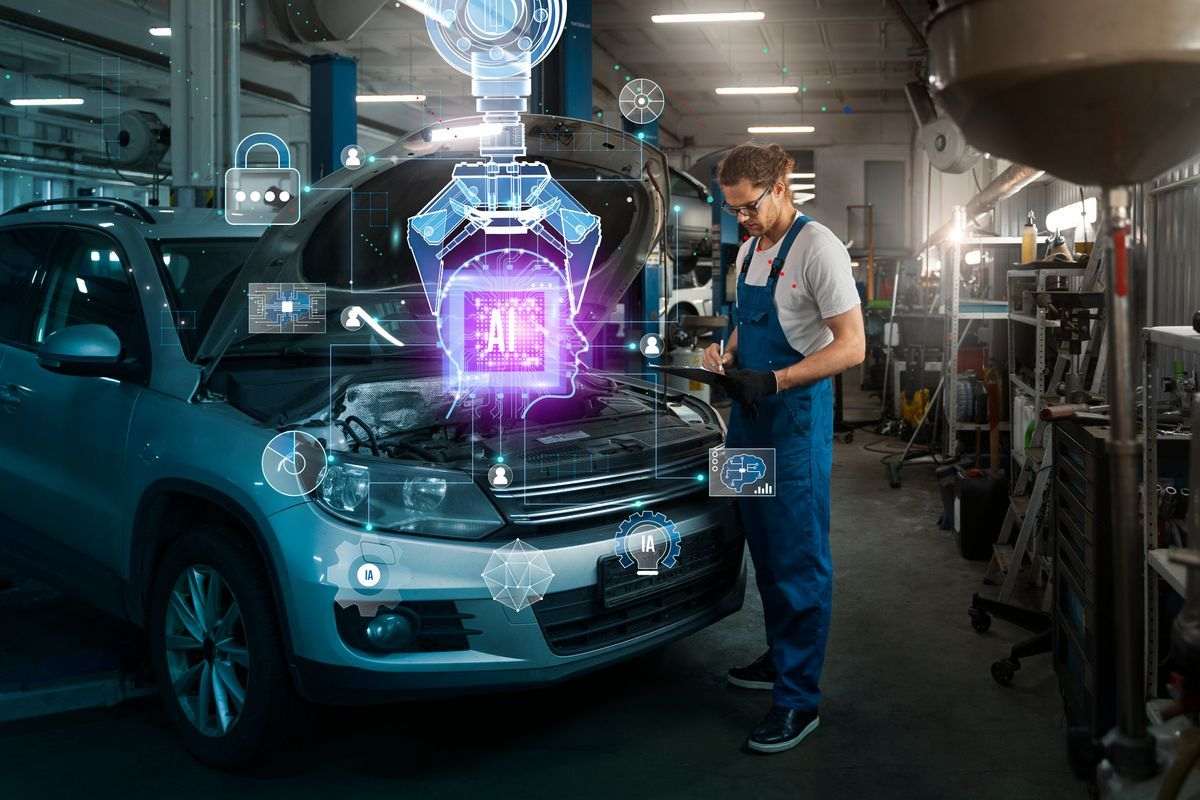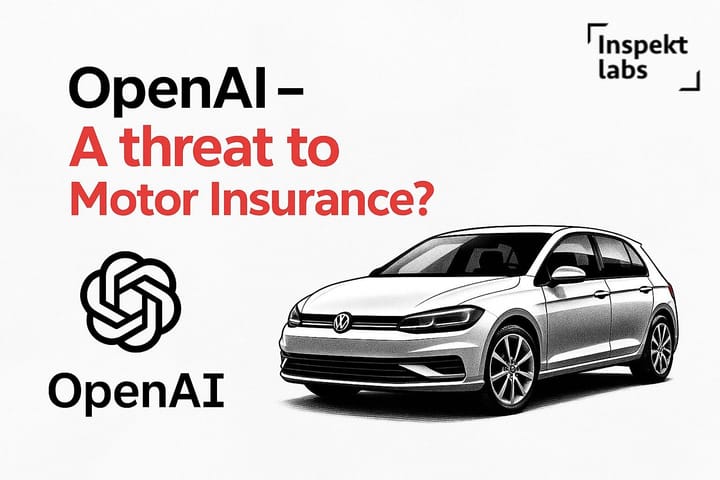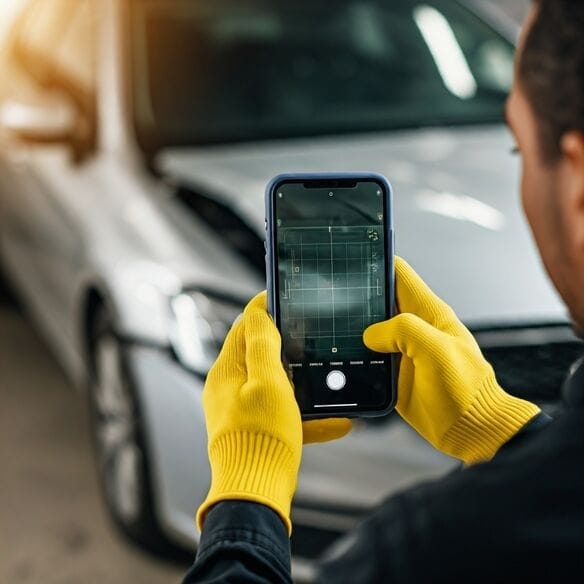Everything You Need to Know About Motor Insurance Inspection

Motor insurance inspections are crucial for assessing vehicle conditions and managing claims effectively. Traditional methods often face challenges like slow processing and potential fraud. Inspektlabs revolutionizes this process using AI, ensuring faster, more accurate inspections and fraud detection, ultimately enhancing insurer efficiency and customer satisfaction.
What is a Motor Insurance Inspection?
A motor insurance inspection is a detailed evaluation of a vehicle's condition and history, conducted to assess its insurability and potential risks. There are primarily two types:
- Pre-Inspection: Conducted before issuing an insurance policy to establish the vehicle's baseline condition and document any pre-existing damages.
- Post-Accident Inspection: Carried out after an accident or incident to assess the extent of damages and verify the validity of claims.
Why are Motor Insurance Inspections Important?
Motor insurance inspections serve several critical purposes:
- Ensuring accurate underwriting and risk assessment: By examining the vehicle's condition, insurers can determine appropriate premiums and coverage levels.
- Detecting pre-existing damages and preventing fraud: Inspections help in documenting existing damages, reducing the risk of fraudulent claims where damages are misrepresented or claimed as new.
- Facilitating accurate claim settlements: Post-accident inspections ensure that claims are settled fairly and accurately based on the assessed damages.
When are Motor Insurance Inspections Conducted?
Motor insurance inspections are conducted at various stages to ensure accurate risk assessment and claim processing:
- At the Time of Policy Issuance (Pre-Inspection): Before issuing a new insurance policy, a pre-inspection is conducted to document the vehicle's current condition and any pre-existing damages. This helps in establishing a baseline for future claims.
- After an Accident or Incident (Post-Accident Inspection): Following an accident, an inspection is carried out to assess the extent of damages and verify the validity of the claims. This ensures that the claim is accurate and corresponds with the incident.
- During Claim Processing to Verify Damages: During the claim process, inspections are performed to verify the reported damages. This step helps in determining the authenticity of the claim and ensures fair settlements.
- When the Insurance Policy Has Expired: If a policy has expired and is being renewed, an inspection is often required to reassess the vehicle's condition and update the insurer's records. This helps in adjusting the premium and coverage based on the vehicle's current state.
- Incorporating Additional Accessories or Bi-Fuel Kits Into the Car: When a vehicle owner adds new accessories or a bi-fuel kit to their car, an inspection is necessary to document these changes. This ensures that the new additions are covered under the policy and helps in adjusting the premium accordingly.
Traditional Inspection Methods
Now that we know what insurance inspection is, let's see how it's done in most cases or the traditional way:

Manual Inspections
In traditional manual inspections, here's what typically happens:
- Physical Examination: An inspector is assigned to physically visit the vehicle's location.
- Documentation: The inspector records vital details such as the chassis number, engine number, and registration number.
- Visual Inspection: They take photographs and videos of the vehicle to document its condition.
- Report Creation: The inspector compiles a detailed report outlining the vehicle's condition, any pre-existing damages, and relevant observations.
- Submission: This report is then submitted to the insurer for review and further processing.
Limitations of Manual Inspections
- Costly: Manual inspections typically cost between USD 100-200 per inspection, which can add up quickly, especially for insurers handling numerous policies.
- Slow Processing: It usually takes 1-2 days to complete a manual inspection, leading to delays in policy issuance and claim settlements.
- Prone to Fraud: Manual inspections are susceptible to errors and fraud, with estimates suggesting that 5-15% of claims involve some form of fraud due to subjective assessments and potential human error.
These limitations highlight the need for more efficient and reliable inspection methods, paving the way for AI-driven solutions like those offered by Inspektlabs.
AI-Driven Inspections: The Future of Motor Insurance
AI-driven inspections leverage advanced technologies such as computer vision, machine learning, and big data analytics to automate and enhance the vehicle inspection process.

Benefits of AI-Driven Inspections
- Speed and Efficiency: AI-driven vehicle inspections can be completed in minutes, significantly reducing the time required for policy issuance and claim processing.
- Accuracy and Consistency: AI systems provide consistent and objective assessments, minimizing human errors and reducing the likelihood of fraudulent claims.
- Cost-Effectiveness: By automating the vehicle inspection process, insurers can reduce operational costs associated with manual inspections.
- Enhanced Customer Experience: Faster processing times and accurate assessments lead to improved customer satisfaction and loyalty.
How AI-Driven Inspections Work
- Image Capture: High-resolution images of the vehicle are captured using smartphones or specialized cameras.
- Data Analysis: The AI system analyzes the images to detect damages, assess the vehicle's condition, and compare it with historical data.
- Report Generation: A detailed inspection report is generated, highlighting the findings and providing actionable insights for the insurer.
- Integration with Claims Processing: The AI-driven inspection system integrates with the insurer's claims processing workflow, ensuring a smooth and efficient process.
Check out our detailed blog on AI motor inspections to see how advanced technology is transforming the insurance industry.
Conclusion
Motor insurance inspections are essential for accurate risk assessment, fraud prevention, and fair claim settlements. While traditional methods have their limitations, AI-driven vehicle inspections offer a promising alternative, delivering faster, more accurate, and cost-effective solutions. Insurers adopting these advanced technologies can expect enhanced efficiency, reduced fraud, and improved customer satisfaction, paving the way for a more reliable and customer-centric insurance industry.



